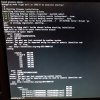New to ProxMox, only installed it a few weeks ago. Last night, it locked up and I had to do a hard reboot. Upon rebooting, it comes up to:
"Error: checksum verification failed.
Entering rescue mode ..."
Tried rebooting and obviously it comes up to the same prompt.
ProxMox should be running on the latest version (ran updates within the last week.)
I'm pretty new to ProxMox and Linux systems in general. Any pointers on how to recover from this would be really appreciated.
"Error: checksum verification failed.
Entering rescue mode ..."
Tried rebooting and obviously it comes up to the same prompt.
ProxMox should be running on the latest version (ran updates within the last week.)
I'm pretty new to ProxMox and Linux systems in general. Any pointers on how to recover from this would be really appreciated.


